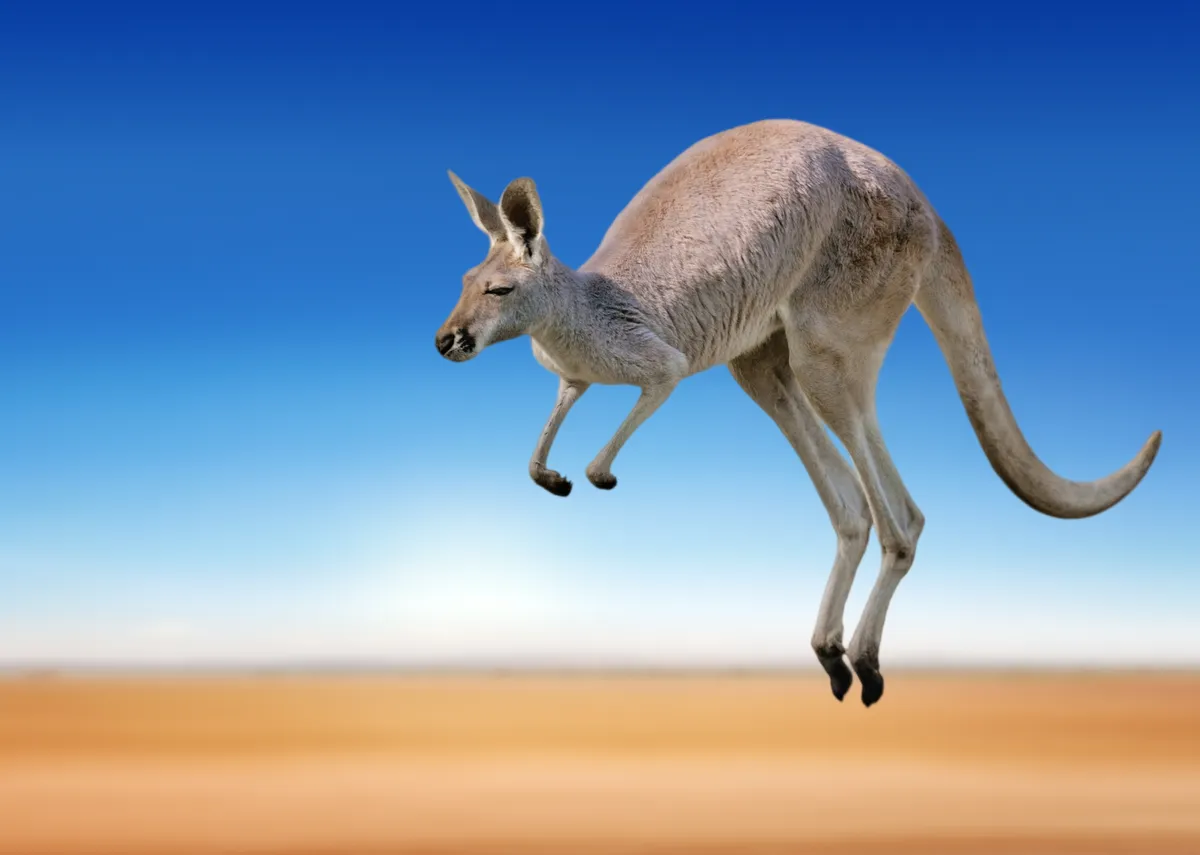The story begins about 30 million years ago, when the ancestor of the kangaroo – a creature a lot like a small possum – climbed down from the treetops to move around on the forest floor. Its feet and ankles, previously suited to climbing, stiffened up to handle its new terrain.
- The kangaroo: All you need to know about Australia's most iconic animal - and its famous hop
- How long does a joey spend in a kangaroo's pouch? Here's your ultimate baby kangaroo guide
- How many legs does a kangaroo have?
As this ancient kangaroo’s foot was very long, the animal couldn’t walk or run properly. However, hopping was easy – as it is for modern-day ’roos. The large, stretchy tendons in a kangaroo’s hind legs act like giant springs. As these tendons strain and contract, they generate most of the energy needed for each hop. This is very different to the way humans jump, which uses a lot of muscular effort.

The tail is also important, acting both as a balancing aid and a counterweight, propelling the animal into each leap. And there’s the added bonus that, while hopping, kangaroos barely need to waste effort on breathing. The jumping motion drives their gut up and down, which inflates and deflates their lungs for them.
Kangaroos usually hop at about 25kph, though they can reach 70kph over short distances, covering as much as 9m in a single hop. This energy-efficient way of travelling means they can cover vast distances in search of food and water, allowing them to thrive in the harsh climate of the Australian outback.
- What are the most dangerous snakes in Australia? Discover the country's top 4 deadliest serpents
- What's the most dangerous animal in Australia? Does the country's wildlife deserve its deadly reputation?
- It contains the world’s deadliest snake and one of the only venomous mammals – so why does Australia have so much deadly wildlife?





